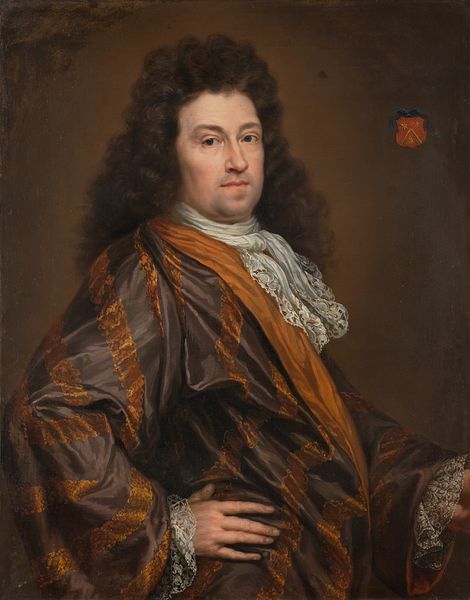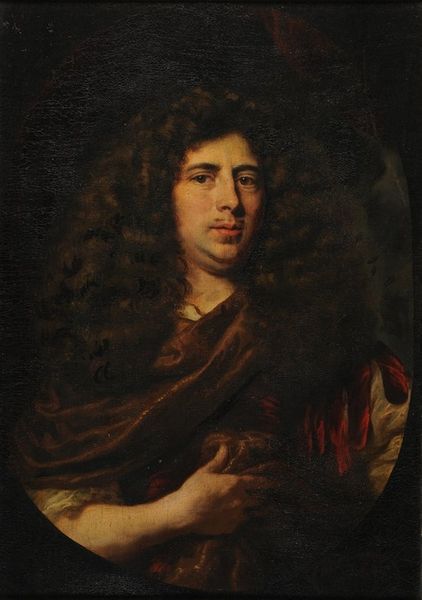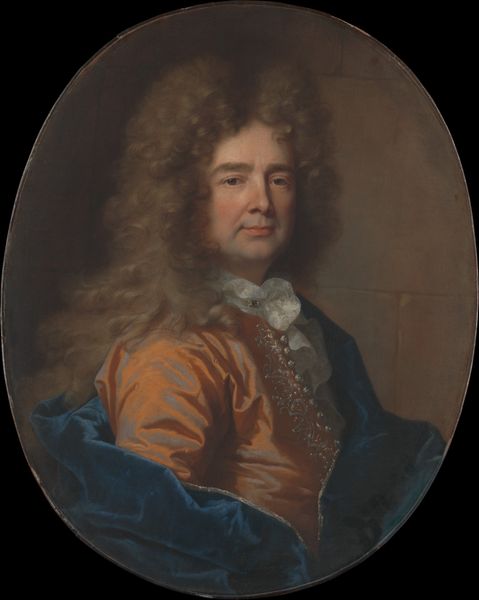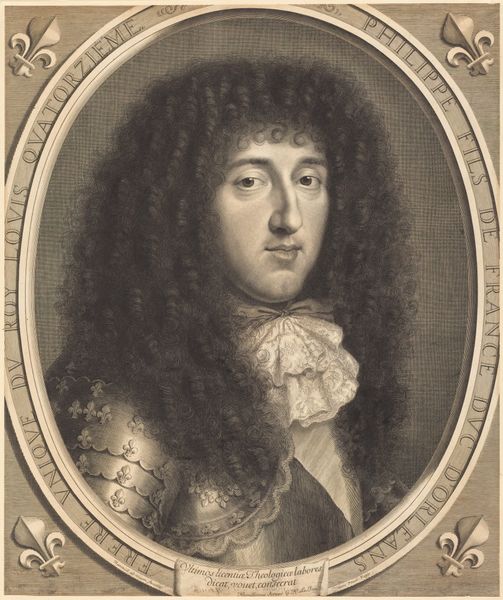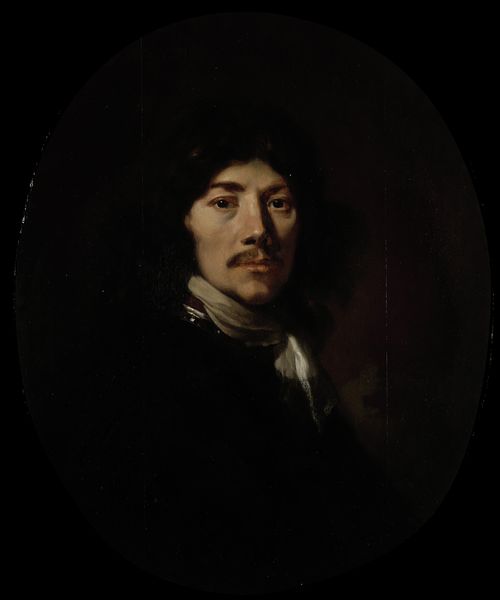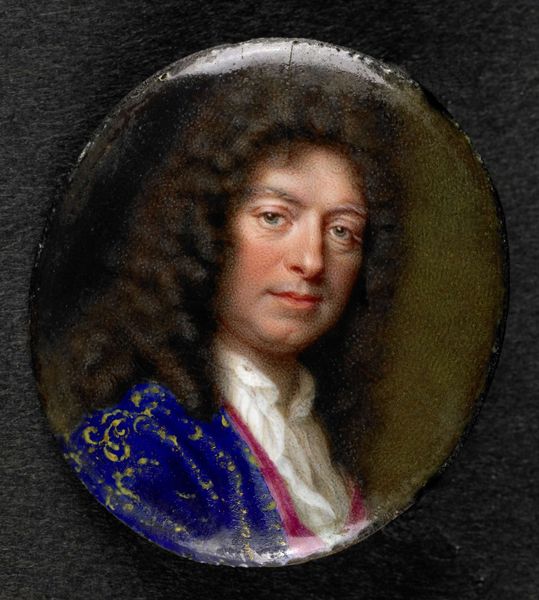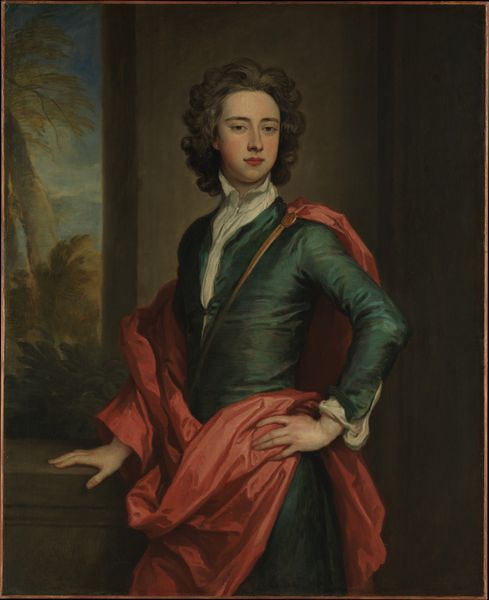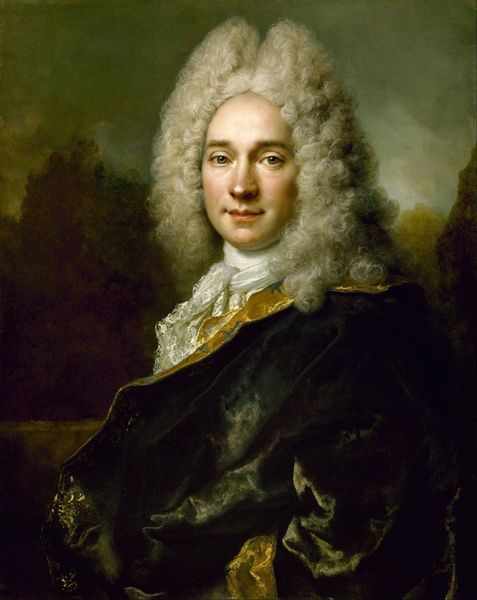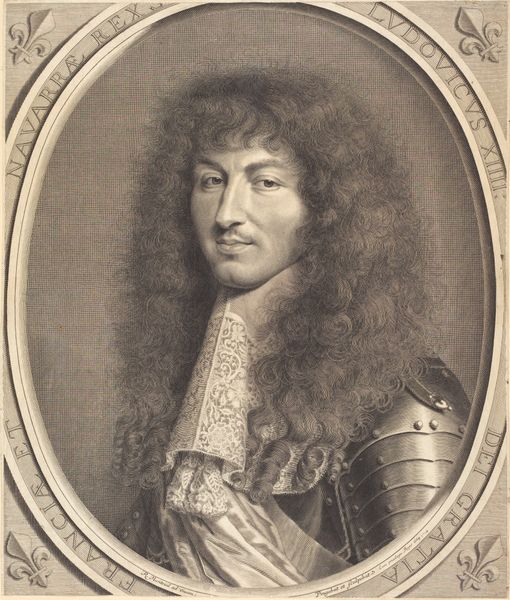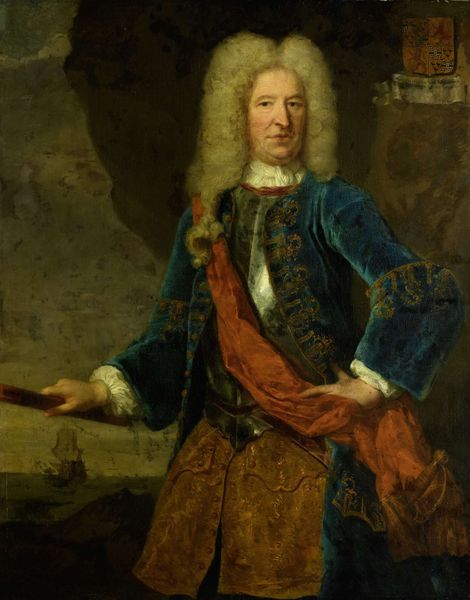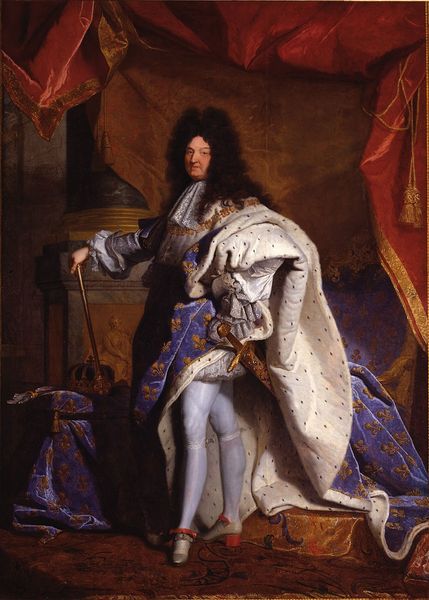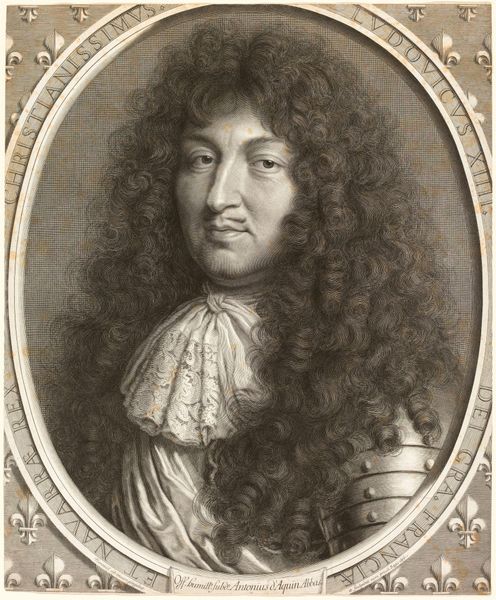
painting, oil-paint
#
portrait
#
self-portrait
#
baroque
#
painting
#
oil-paint
#
figuration
#
history-painting
Copyright: Public domain
Editor: We're looking at Hyacinthe Rigaud’s "Self-Portrait," painted in 1696. It’s an oil painting, and what strikes me immediately is the confident, almost theatrical pose. What can you tell us about Rigaud's place within the art of his time? Curator: Absolutely. Rigaud's portraits epitomize the Baroque era, and understanding their socio-political function is crucial. His subjects were primarily members of the French aristocracy. How does this impact the reading of his self-portrait? Does the extravagant wig and the opulent drapery signify personal vanity or a calculated construction of identity? Editor: I see what you mean. It could be read as strategic, a way to position himself within that elite circle. Curator: Exactly. Rigaud's work exists within a complex system of patronage. These paintings weren’t simply decorative; they were tools of power and social mobility. The "Self-Portrait" becomes an intriguing assertion of his own status and artistic ability, a dialogue with and against the very system he served. How might feminist or critical race theories add another layer to understanding this portrait? Editor: That's interesting to consider. Maybe looking at who had access to portraiture then can show us the biases within the art world itself. Curator: Precisely. Rigaud's art can be viewed through the lens of accessibility and representation, asking who is seen and who remains unseen. It forces us to confront questions about class, gender, and power dynamics within art history itself. Editor: I hadn't considered how his work could open up such broader discussions. Thanks for making those connections for me. Curator: It's about understanding the art as part of the system that makes seeing – and being seen – possible.
Comments
No comments
Be the first to comment and join the conversation on the ultimate creative platform.
